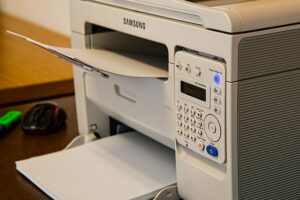There’s nothing quite like tax season to spark both businesses and individuals to start thinking of ways to reduce taxes for the next year. The right tax planning strategies help you lower tax liability and reduce costs. There are numerous strategies out there, but for property owners, depreciation deductions are usually a great option. You can choose to use the deductions independently or combine them with cost segregation to take advantage of tax-saving options.
What is Depreciation?
Taxpayers have the option of using depreciation which allows them to recover some of their purchased property costs over a period of time, instead of all at once. The deduction is included on your income taxes. The depreciation deduction depends on numerous factors such as the type of property, and the value of the property.
Eligible Deductions
Individuals and businesses can use the depreciation deduction for a property if it meets specific criteria including:
- The property generates income for a business or taxpayer.
- If the taxpayer has possession of the property. This can include a lease, secured through a loan or mortgage.
- The property has a determinable use of life. That means it will wear out, decay, or become obsolete in a predictable time frame.
- A property’s expected lifespan is only one year.
Land is not a depreciation deduction. However, some improvements to the land or property may qualify. Property that is used and disposed of within a single tax year is ineligible for the deduction. Intangible property is also ineligible for depreciation. However, it may be eligible for amortization. Also, property that has term interest that the taxpayer doesn’t hold, is ineligible for deprecation.
Choosing a Depreciation Deduction Method
When a taxpayer qualifies for a depreciation deduction, they have to choose from several methods. The deduction method depends largely on the type of property owned. Individuals and businesses may benefit from using separate

Image by louisehoffmann83 from Pixabay
along with a depreciation deduction to obtain greater savings on their taxes.
Straight-Line Depreciation
Straight-line depreciation is the simplest method of determining the loss of an asset’s value over time. The property depreciates at the same rate over the entire recovery period. For example, a property with a value of $150,000 that has a 15-year recovery period, depreciates by $10,000 every year. Straight-line depreciation is the most commonly used method for properties that have higher depreciation periods including 27.5, 31.5, and 39-year periods. But it is also a useful option for taxpayers to use if their property has a shorter depreciation period from say three, 10, or even 15-years.
150% Declining Balance
Using the declining balance depreciation method is beneficial for taxpayers who need more significant deductions earlier. The method allows for a 150% depreciation on the property based on straight-line depreciation during the initial year. That would mean a $15,000 deduction rather than $10,000 in the previous example. The 150% declining balance method is the normal standard used for properties having a 15 or 20-year recovery period. However, it cannot be used for an asset or property with a recovery period longer than 20 years.
200% Declining Balance
This method also uses the straight-line depreciation amount when determining the declining balance. Using this method allows the taxpayer to use 200% in the first year. The method works for assets with a shorter recovery period, usually between three and 10 years. Property having a recovery period of more than 10 years is not eligible for the 200% declining balance depreciation method.
Bonus Depreciation
For property that has a depreciable life of 20 or fewer years, the bonus depreciation method allows a taxpayer to take an increased depreciation deduction within the first year. The Tax Cuts and Jobs Act increased the amount of bonus depreciation from 50 to 100% until December 31, 2022. At the end of 2022, the percentage of the bonus depreciation lowers. It will gradually phase out until expiring on December 21, 2026.
Section 179 Expensing
Section 179 of the U.S. Tax Code lets taxpayers deduct business expenses and equipment related to depreciable assets. This includes items like vehicles, software, technology, and office equipment. This helps a business lower current-year tax liabilities instead of depreciating the asset over time. The expensing method works only the year assets are placed into service. The maximum deduction allowed for a Section 179 is $1,050,000 for 2021. For 2022, the maximum allowed is $1,080,000. This annual adjustment allows for inflation. The annual limitation phases downward for purchases over $2.62 million (2021) and $2.7 million (2022). Costs exceeding annual limitations cannot be expensed using Section 179 but may be eligible for bonus depreciation.

Image by Steve Buissinne from Pixabay
Cost Segregation to Maximize Depreciation
Cost segregation may be beneficial for taxpayers in a property’s early years. It allows a taxpayer to identify building assets with shorter recovery periods, then takes eligible depreciation amounts. Commercial properties and rental properties have longer recovery periods than other types of tangible properties. Residential rental property has a depreciable life of 27.5 years. Commercial property’s depreciable life is 39 years.
Tangible properties like flooring, cabinets, fixtures, and fencing have shorter lifespans and recovery periods. Shorter recovery periods mean a faster depreciation rate which results in larger deductions in the earlier years. Cost segregation allows taxpayers to separate out the components of the property that have faster depreciation rates. This can help reduce tax liability as well as increase cash flow. It can also allow for the use of bonus depreciation as well as Section 179 expensing for some of the components of the property that might not otherwise qualify for those types of deductions.
Integrating cost segregation into your tax planning can have some negatives. Before using this method, think about:
- Cost segregation accelerates depreciation deductions disallowing their use later
- Taxpayers may need to hire consultants to conduct a cost segregation study
- Cost segregation can make filing tax returns more complicated, including filing more forms to notify the IRS that you changed the depreciation method
Tax Planning & Depreciations
Businesses can often lower tax liability and improve cash flow by combining cost segregation and depreciation deductions. Many individuals and companies take advantage of the tax savings by claiming building depreciation. However, few get all of the real estate tax savings they are eligible to receive by failing to use cost segregation and depreciation.



